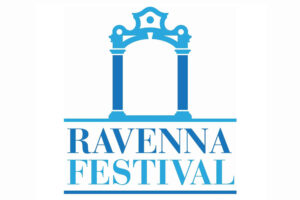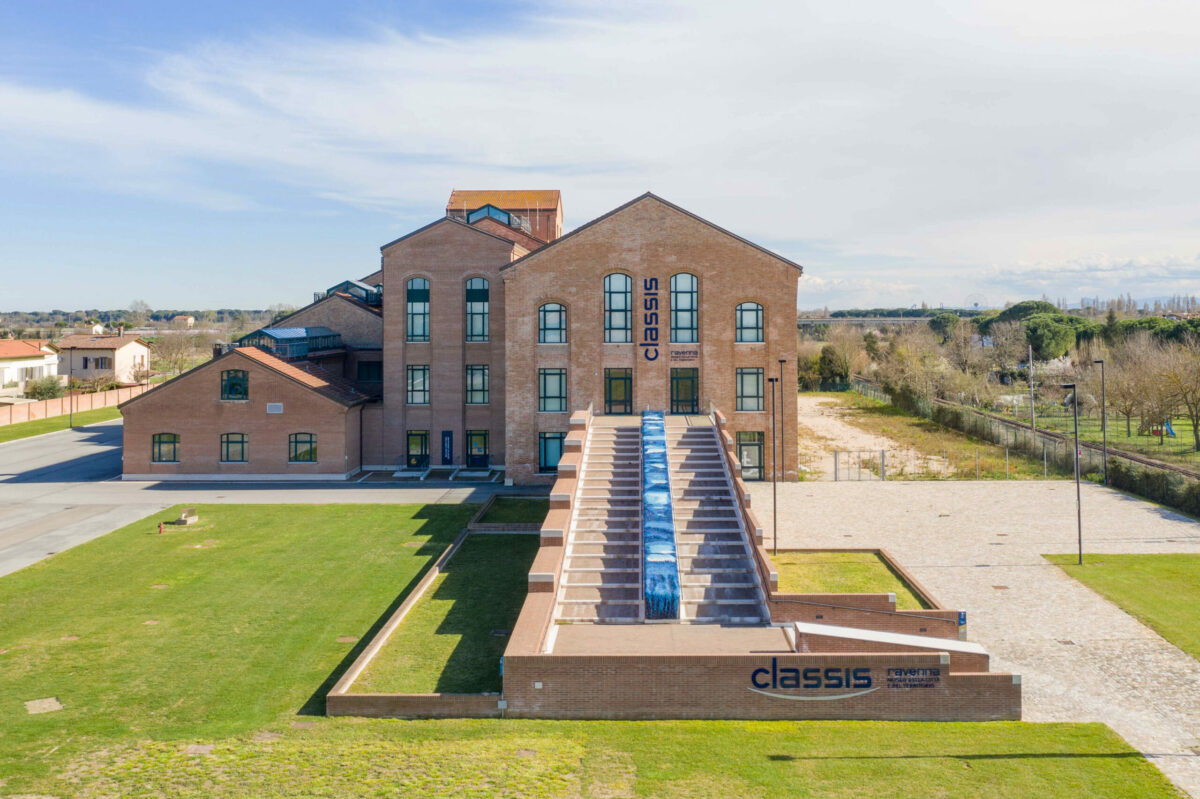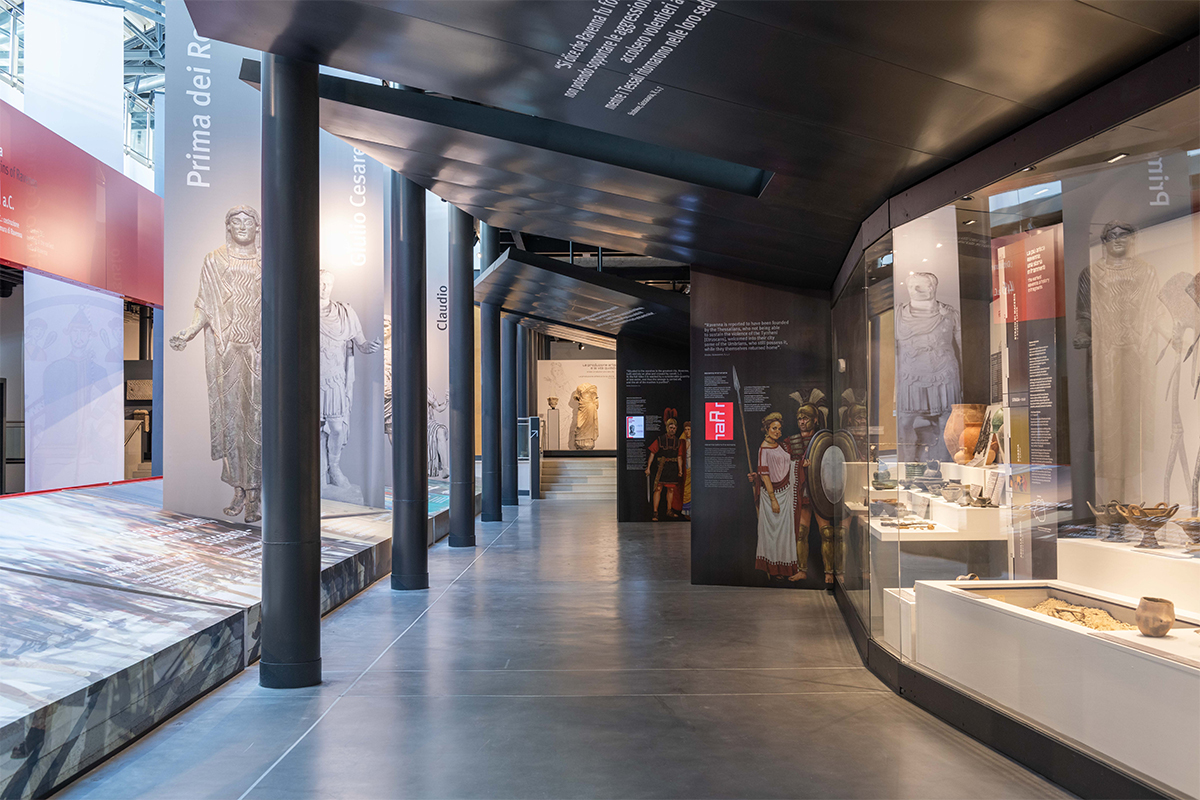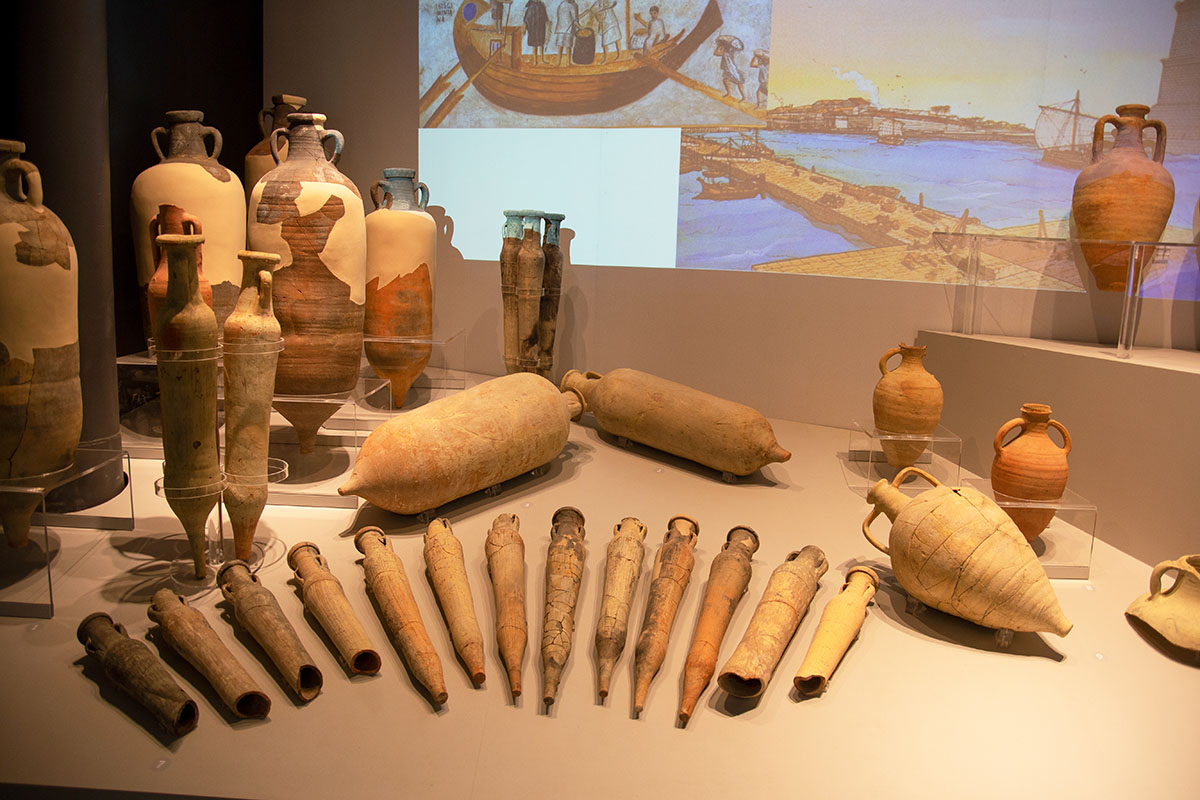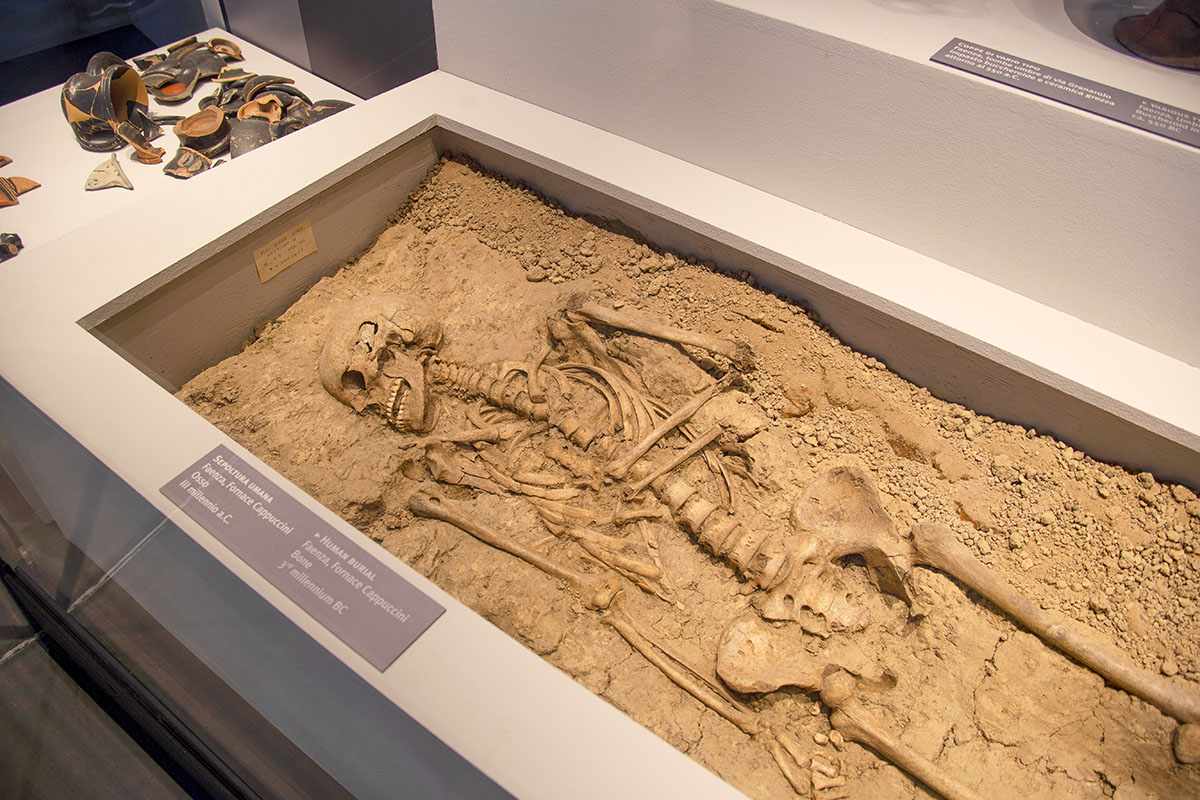CLASSIS RAVENNA is one of Italy’s most important archaeological museums, a real journey through the history of Ravenna.
Along with the nearby Basilica of Sant’Apollinare in Classe and the Ancient Port, Classis Ravenna is the third piece of the Archaeological Park of Classe.
Located just a few hundreds metres from the Basilica of Sant’Apollinare in Classe, the museum stretches over a 2,800 sqm surface. It is the result of an articulate project of industrial archaeology that restored and renovated a former abandoned sugar factory.
A glittering staircase decorated with a 33 metre-long wave in mosaic in shades of blue created by Laboratorio di Restauro del Mosaico Antico of Fondazione RavennAntica welcomes the visitors.
It is an amazing artwork that allures you up to the museum’s entrance, highlighting the everlasting connection between Ravenna and the sea.
What to see
Once inside, you immediately start your dizzy journey through the millennial history of the Byzantine capital: from its origins, you will arrive up to the Middle Ages.
A timeline will lead you all the way through the museum, keeping track of your journey; step by step you will find all the main information of the different time periods.
Looking at the different sections, you will see ancient findings, dating back to the pre-Roman age or the Etruscan-Umbrian period. Your journey continues across the Roman era, from the Classical Age to Late Christianity.
After a small digression in the Gothic and Byzantine era, you will finally reach the Middle Ages.
Besides the most common items — such as urns and oil lamps coming from the diggings of the Ancient Port of Classe — you will find yourself face to face with statues, memorial stones, polychrome mosaics, further livened up by 3D reconstructions, videos and much more.
A floor mosaic not to be missed is the one coming from the legendary so-called Theodoric’s Palace.
The exhibition doesn’t just follow a progressive timeline, but also focuses on some fundamental aspects of the city’s ancient history.
This is the case of the section about Ravenna as a multiethnic city; about the artworks it preserves; or about the city’s growth and urban development.
A special chapter is dedicated to the close relationship between Ravenna and the sea. It is not by chance that the museum is located in Classe.
The city of Classe was namely the ancient site of the Roman fleet, as well as an important port that has made Ravenna a power of the Mediterranean in the Late Christian period.
Lastly, the itinerary offers an insight on the Basilica of San Severo, a very suggestive place of the ancient civitas Classis, which in the last years has been the focus of an archaeological project that will turn it into the fourth part of the Archaeological Park.
From September 2023, Classis Ravenna has been further enriched by two new exhibition areas – “Living in Ravenna” and “Praying in Ravenna” – exploring two crucial aspects of the history of the city and the territory: residential buldings in late Antiquity and religious buildings.


